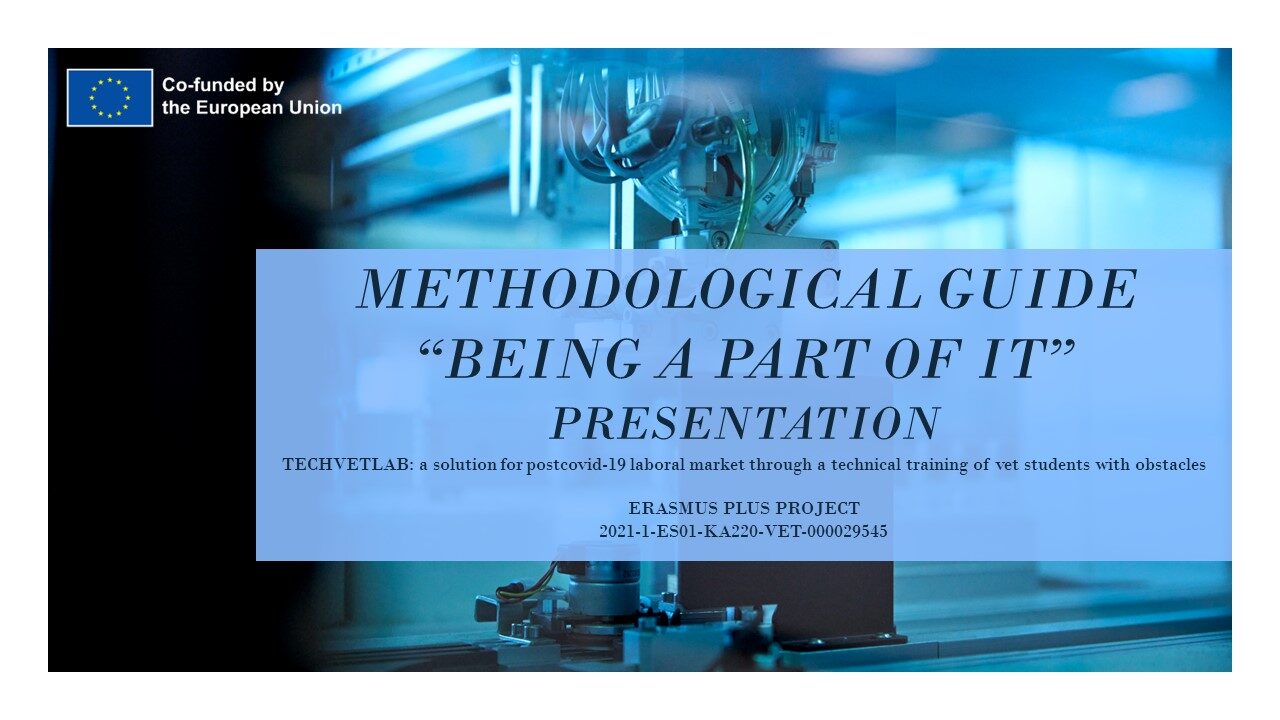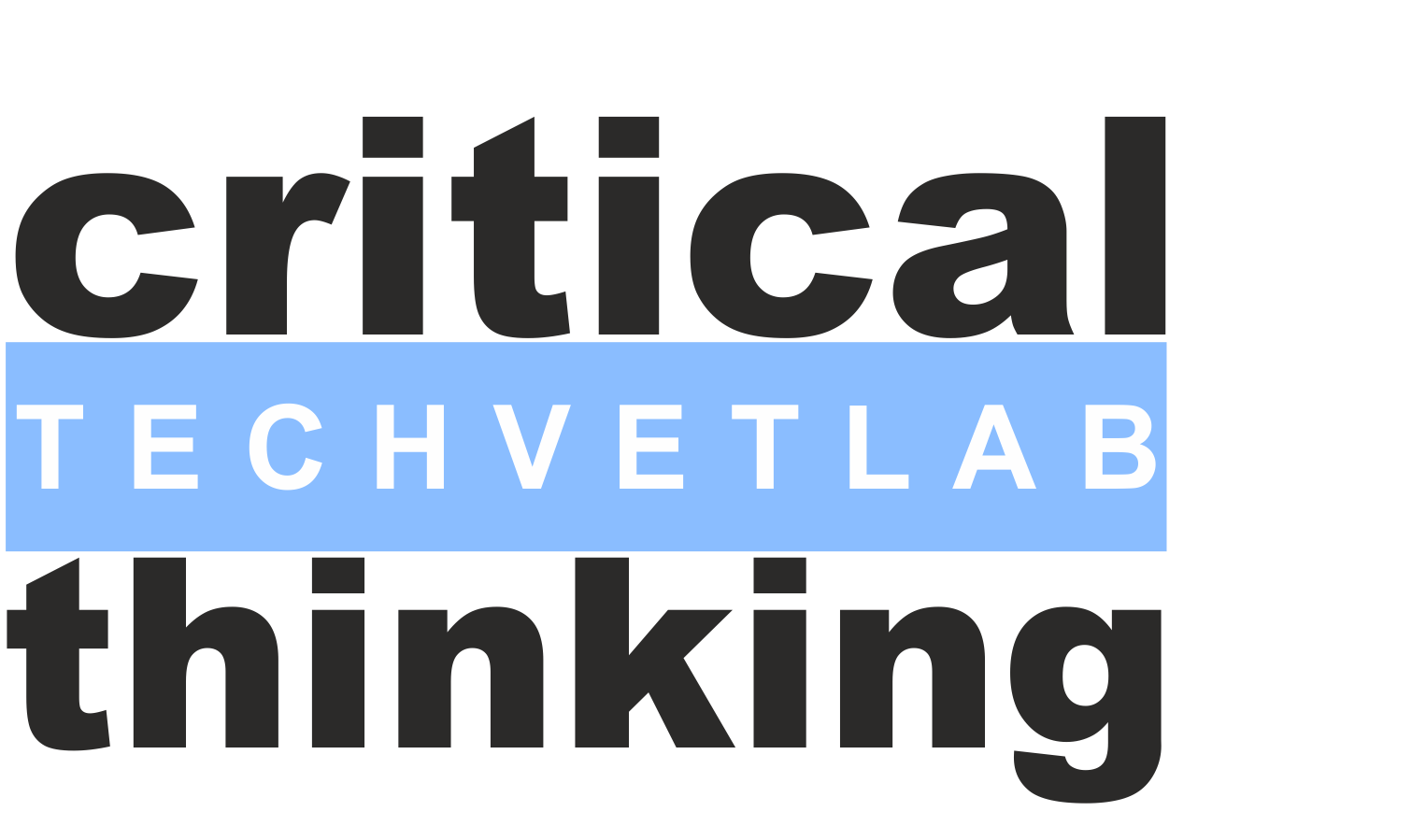DOWNLOAD THE GUIDE
METHODOLOGICAL GUIDE TO TURN THE CLASSROOM INTO PART OF A COMPANY: FROM A CLASSROOM TO A RESEARCH LABORATORY


The METHODOLOGICAL GUIDE TO TURN THE CLASSROOM INTO PART OF A COMPANY: FROM A CLASSROOM TO A RESEARCH LABORATORY defines the BEING A PART OF IT METHODOLOGY and provides all the necessary guidelines to implement it in the VET classroom, through a global adaptation of the classroom planning, the implementation of virtual network work routines with the company and the use of digital tools that equate the classroom with the company, allowing students as a whole to develop critical parts withinof cutting-edge innovation projects.
With the aim of generating learning processes that make it possible to alleviate the lack of training in the work environment, with this project we are going to generate an innovative methodology that allows us to introduce the classroom as a whole into the work dynamics of technology companies: THE BEING METHODOLOGY A PART OF IT.
METHODOLOGY “BEING A PART OF IT”
It is a working method devised by experts linked to the project entities that represents an evolution of Project-Based Learning.
BPI is an innovative method of VET education where the classroom becomes a virtual department of the technology company, developing important parts of the company’s research projects and training students with obstacles in the processes and transversal skills that favor their hiring.
The Being Part of It (BPI) methodology is a teaching-learning method centered on the student in which he acquires knowledge, skills and attitudes through the development of technological projects, which unlike the PBL methodology are not simulations, but active and developing projects to achieve technological innovations that will change the future.
With the BPI students are offered an opportunity to integrate into real development processes, facing the problems of this work environment, but from the classroom itself through collaborative work, in environments of trust and directly linked to usual learning processes typical of PBL. With this, all the skills required by the technology sector, a market of great growth and hiring capacity, are enhanced in their personnel selection processes and generating significant improvements in their curricula and work processes that favor their employability.
BPI focuses on the student developing transversal skills related to autonomy in lifelong learning, group work, leadership, effective communication orally and in writing, definition and fulfillment of objectives and critical thinking applied to science and technology.
ADVANTAGES OF THE BPI METHODOLOGY
1. It allows collaboration between the educational center and the company, in which a technician from the company coordinates the company project while a teacher coordinates the work in the classroom.
2.BPI focuses on the student developing transversal skills related to autonomy in lifelong learning, group work, leadership, effective oral and written communication, definition and fulfillment of objectives and critical thinking applied to science and technology.
3. Pose a project as a challenge for the classroom as a whole, or for large groups within the classroom, with what this can mean in terms of the awareness of belonging to a group and the response in relation to shared responsibility.
4. It promotes the learning of teleworking techniques that are essential in the professional life of students.
5. It shows the ability to interact with a foreign company or with foreign VET training centres.
6. It implements in the classroom the use of management and task sharing software used by technology companies in order to define tasks, schedule them and integrate them into the work times of the rest of the company’s departments.
7. Through networking, students and the educational center are participants in future products that reach the market.
8. It offers students the opportunity to integrate into real development processes, facing the problems of the work environment, but from the classroom itself
FOR STUDENTS
The student learns to work as a team with the rest of the classmates, assume responsibilities and initiatives that lead to results, present development reports, learn the manufacturing and work processes of the companies. In short, knowing what it means to work in a technology company
FOR VET CENTERS
It allows the VET center to participate directly in the development of technological research, being partners in its results and enhancing the credibility of this educational stage
FOR VET TEACHERS
The teacher develops digital skills and area able to improve their educational skills by incorporating the real times and processes of technology companies into their teaching
CONTENTS
1.INTRODUCTION
2. OBJECTIVES
3. LA METODOLOGÍA BEING A PART OF IT
4. WORK PLAN
4.1. GENERIC WORKPLAN MODEL
4.2. WORK PLAN MADE BY SMALLCODES SRL
4.3. WORK PLAN MADE BY SOMATICA, M&S
4.4. WORK PLAN CARRIED OUT BY IKASIA TECHNOLOGIES SL
4.5. WORK PLAN MADE BY W4A
5. PARTICIPATION IN RESEARCH PROJECTS
6. METHODOLOGY: WORK IN THE CLASSROOM
6.1. MECHANISMS OF COMMUNICATION AND COORDINATION WITH THE COMPANY
6.2. WORK IN THE CLASSROOM
7. THE ROLE OF THE TEACHER IN THE CLASSROOM
7.1. MECHANISMS TO ADAPT CLASSROOM CURRICULA TO COMPANY-RELATED TRAINING
7.2. PLAN OF ADAPTATION OF THE DIDACTIC PROGRAMMING TO THE BPI METHODOLOGY: IES ENRIQUE TIERNO GALVÁN DE MONCADA (SPAIN).
8. THE ROLE OF THE TUTOR IN THE COMPANY
9. AGREEMENTS
10. EVALUATION MECHANISMS
11. ACCREDITATION OF COMPETENCES
12. CERTIFICATION PROCESSES
13.BIBLIOGRAPHY
14.ANNEXES
